The map shows lightning detections during the 48-hour period ending at 10 a.m. MDT July 9, 2020. The red dots are the oldest.
Author: Bill Gabbert
COVID takes us back to our fire suppression roots, for now anyway

The precautions wildland firefighters have to take to reduce or prevent spreading the dangerous COVID-19 virus has affected the suppression of wildfires. The new procedures include keeping crews together and as isolated as possible, transporting fewer firefighters in each vehicle, avoiding fire camps when possible, sanitizing everything, physical distancing, reducing travel, and limiting contacts and interactions. These policies may reduce the efficiency and output of crews.
Another effect of the pandemic is the re-adopted strategy from 110 years ago of putting out almost all new fires as quickly as possible. Managing a fire for “resource benefits”, formerly called “let burn”, can result in huge fires that burn for months, tying up hundreds of firefighters. They produce smoke that can be especially harmful to those with lung damage caused by COVID.
Below is an excerpt from an article by Jeanne Dorin McDowell published July 7, 2020 in Smithsonian Magazine.
With COVID, firefighting is hearkening back to the more-antiquated style. For example, firefighters will respond quickly to suppress small fires quickly rather than letting them burn, using local resources instead of bringing in firefighters from other areas. Controlled burns, fires set intentionally to eliminate dead growth and pave the way for new healthy growth, will be reduced if not canceled for the 2020 fire season because the accompanying smoke can seep into surrounding communities and harm individuals who have acquired the COVID-19 virus.
“We need to go back to the original Smokey Bear model, for this year anyway,” says California state forester and fire chief Thom Porter, director of CAL FIRE (California Department of Forestry and Fire Protection). “While we are in the COVID pandemic, we have to reduce smoke impacts to communities from long burning wildfires, even in exposure to our firefighters. We have to keep fires small. Yes, it’s a throwback and not what I want in the future. But it’s something we need to do this year.”
Towards that end, aerial firefighting will be beefed up and helicopters added to fleets to douse fires with flame retardant or water in advance of firefighters trekking into locations to fight wildfires. Says the Forest Service’s Hahnenberg: “We will mount aerial attacks, even in remote areas where fires might have been allowed to burn in the past, to reduce risks to ground crews and the public from smoke that could make them more vulnerable to severe COVID-19 illness.”
This is the first time I have seen a quote from a high-ranking person in the U.S. Forest Service saying out loud, so to speak, that they were beefing up the number of fire aviation resources due to the pandemic.
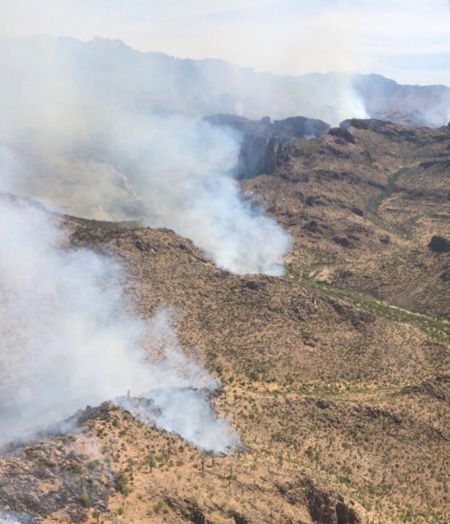
Numbers Fire grows to over 18,000 acres south of Carson City, Nevada
Six miles southeast of Minden
(UPDATED at 12:02 p.m. MDT July 9, 2020)
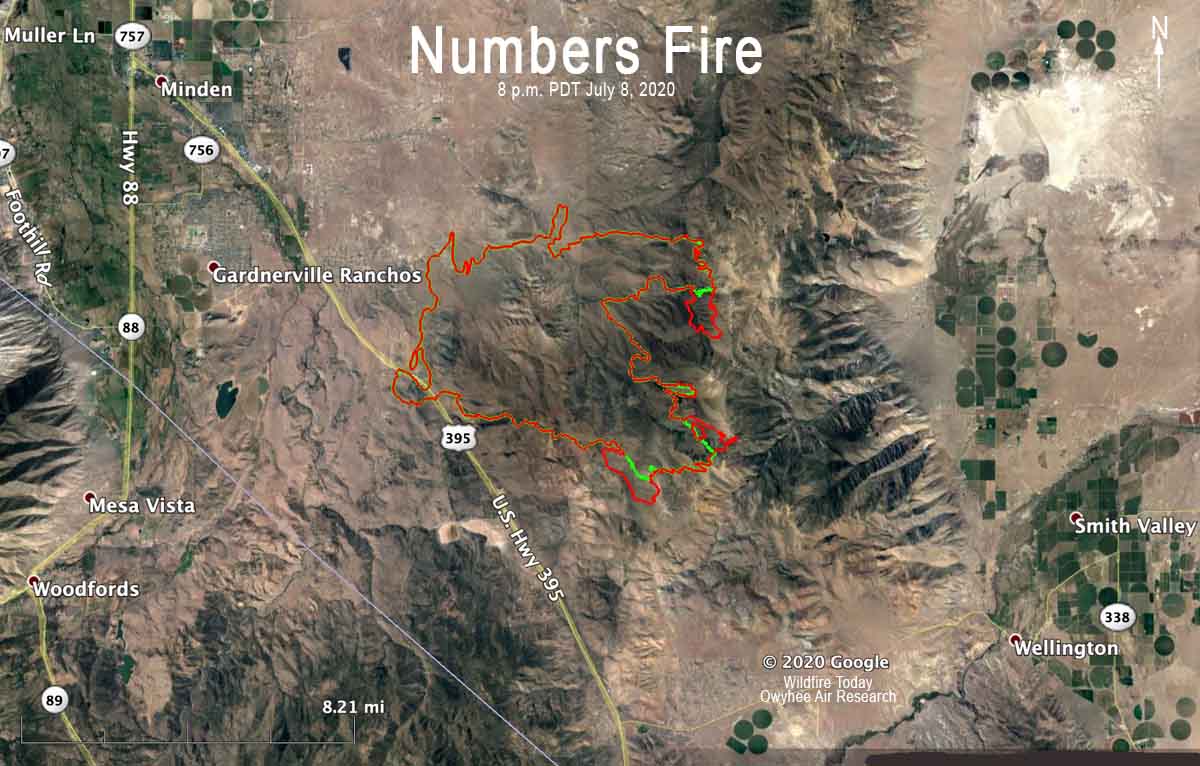
The spread of the Numbers Fire south of Carson City, Nevada slowed Wednesday, but a mapping flight at 8 p.m. MDT July 8 determined that it added an additional 1,025 acres to bring the total up to 18,321.
Information from the Incident Management Team Thursday, July 9:
“Great Basin Team 4, a Type 2 Incident Management Team, assumed command of the Numbers Fire this morning.
“[Thursday], crews are being flown to the upper ridgeline of the Pine Nut Mountains to limit fire spread over the ridge to the east and into Smith Valley. Right now, this is the area of greatest concern for additional fire growth. Helicopters will support these crews by dropping water from buckets and delivering supplies.
“Additional firefighting resources will continue to secure and patrol existing firelines and respond to any adjacent fire activity. In some areas, where containment is certain, crews and equipment will begin to repair suppression actions. This includes rehabilitation of ground moved by dozers to create fireline.”
(Revised at 8:10 a.m. MDT July 8, 2020)
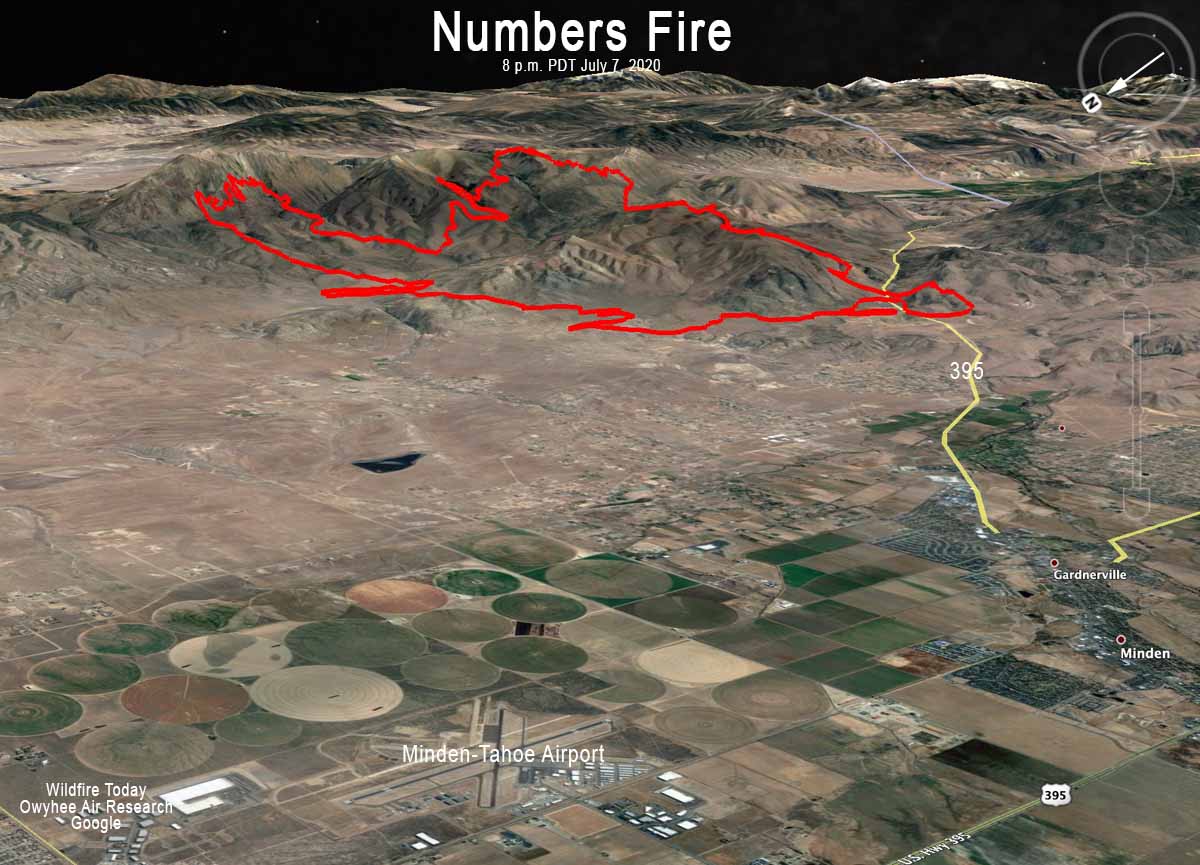
The Numbers Fire 17 miles south of Carson City, Nevada burned 17,296 acres during the first 24 hours after being reported at 9:01 p.m. MDT July 6, 2020. A mapping flight at 8 p.m. July 7 showed that it had burned into the 2,323-acre Monarch Fire that started June 26, 2020.
A Type 2 Incident Management Team, Great Basin Team 4, is organizing the efforts of 11 hand crews, 38 fire engines, and 9 helicopters, for a total of 450 personnel. The fire behavior is described as extreme and threatens 350 residences.
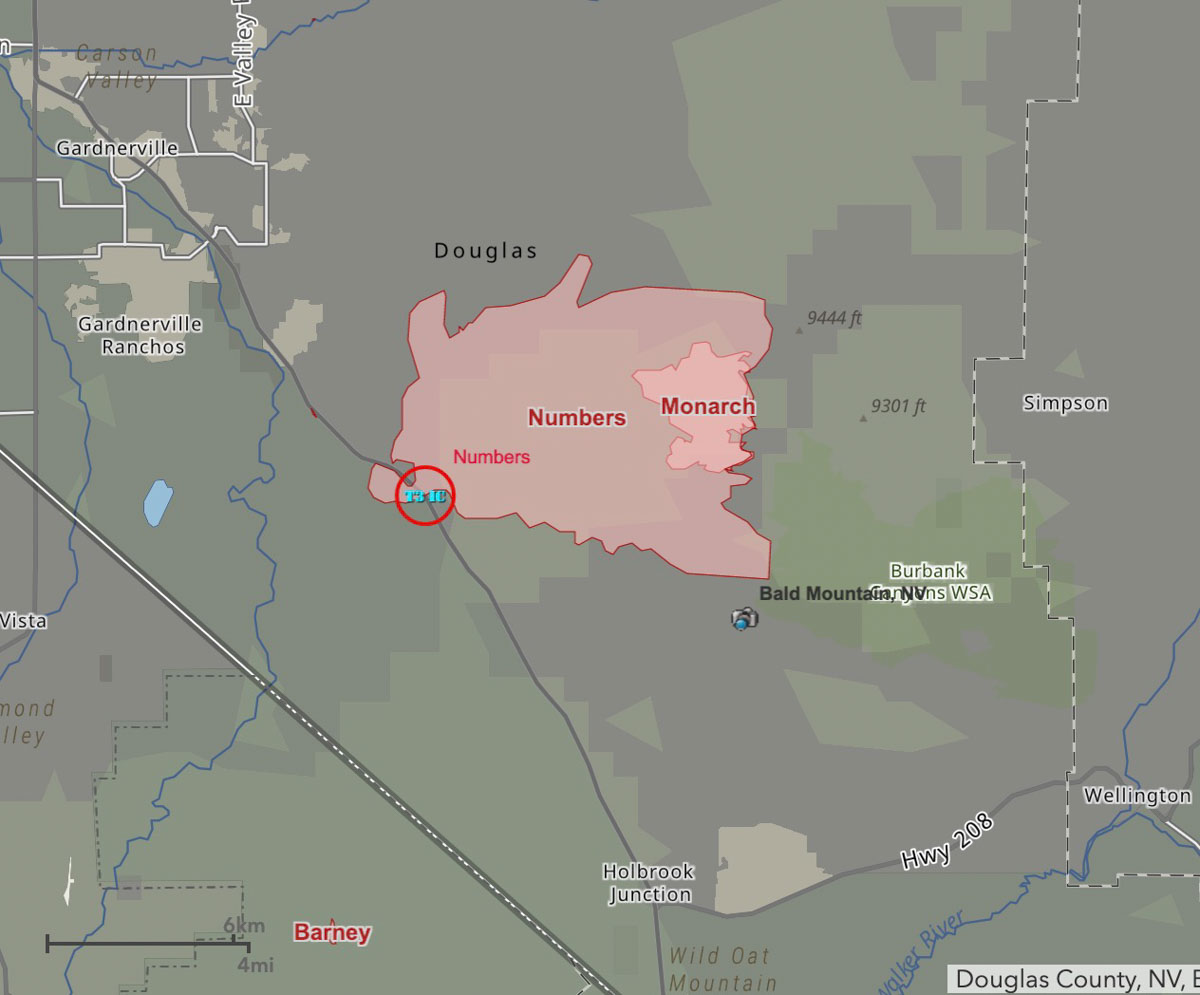
Wednesday afternoon firefighters on the Numbers Fire can expect sunny skies with no chance of rain, temperature around 80, relative humidity of 10 percent, and wind out of the northwest at 12 to 17 mph gusting to 25 — conditions similar to Tuesday.
Wednesday morning fire officials said evacuations had been lifted for Pine View Estates, Bodie Flat, Out our Way Area, Blue Bird, and Lena Way.
The two photos below were taken from the same camera at Ridge Tahoe. The first is from 2:40 p.m. June 7, and the second, 7:08 a.m. June 8.
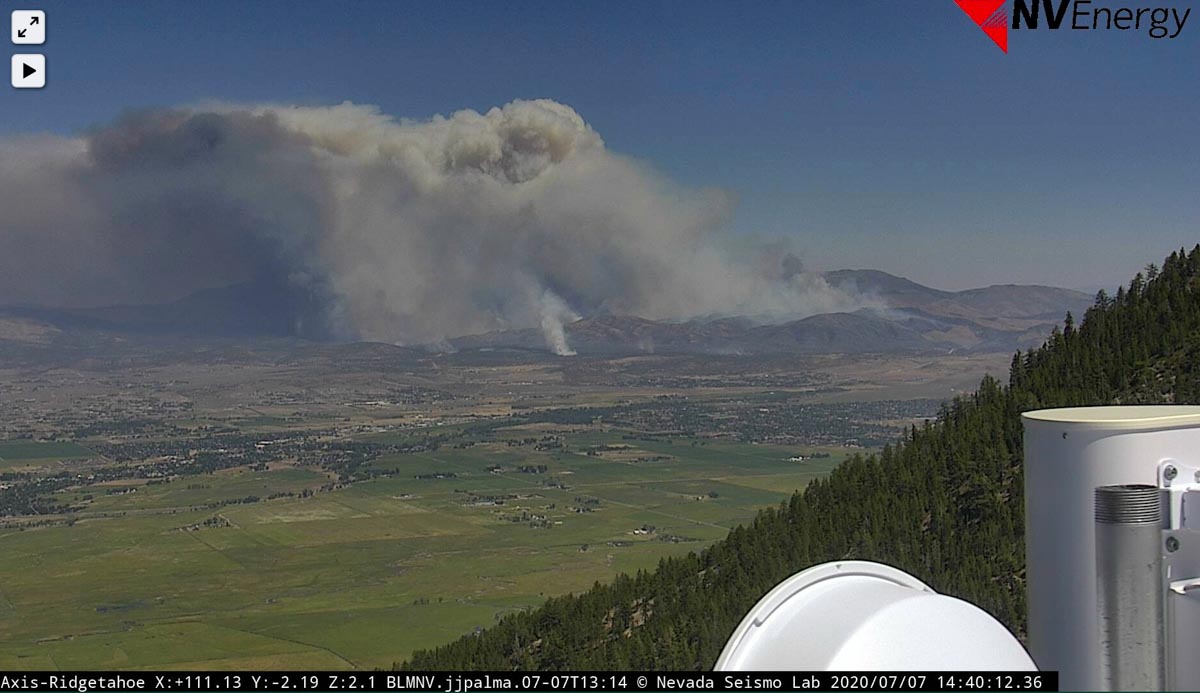
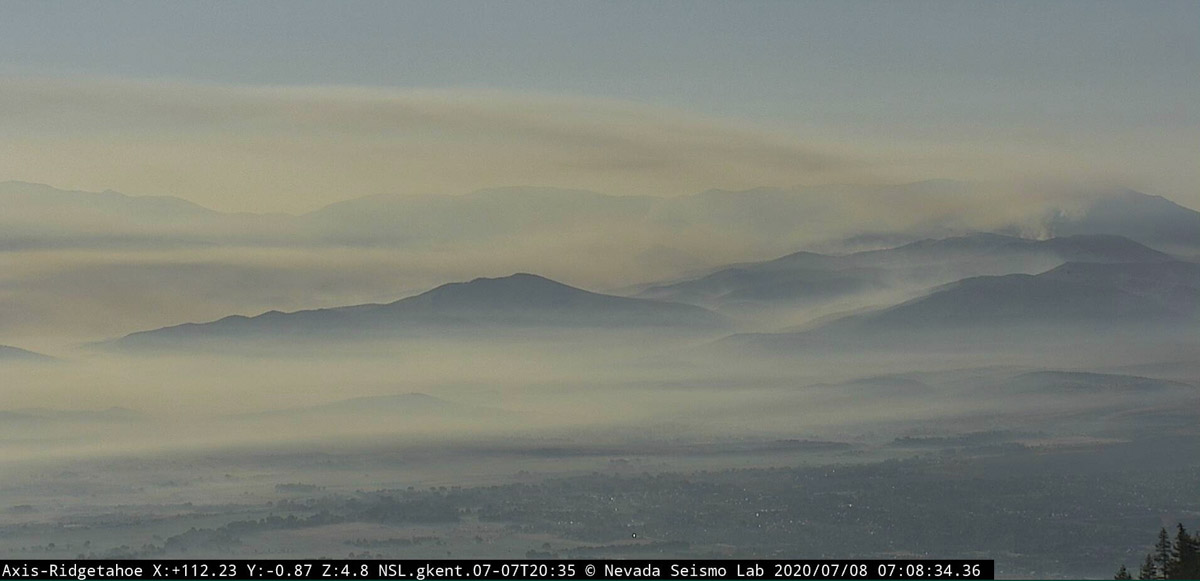
Helicopter crashes while working on the Polles Fire in Arizona
(Updated at 8:18 p.m. MDT July 7, 2020)
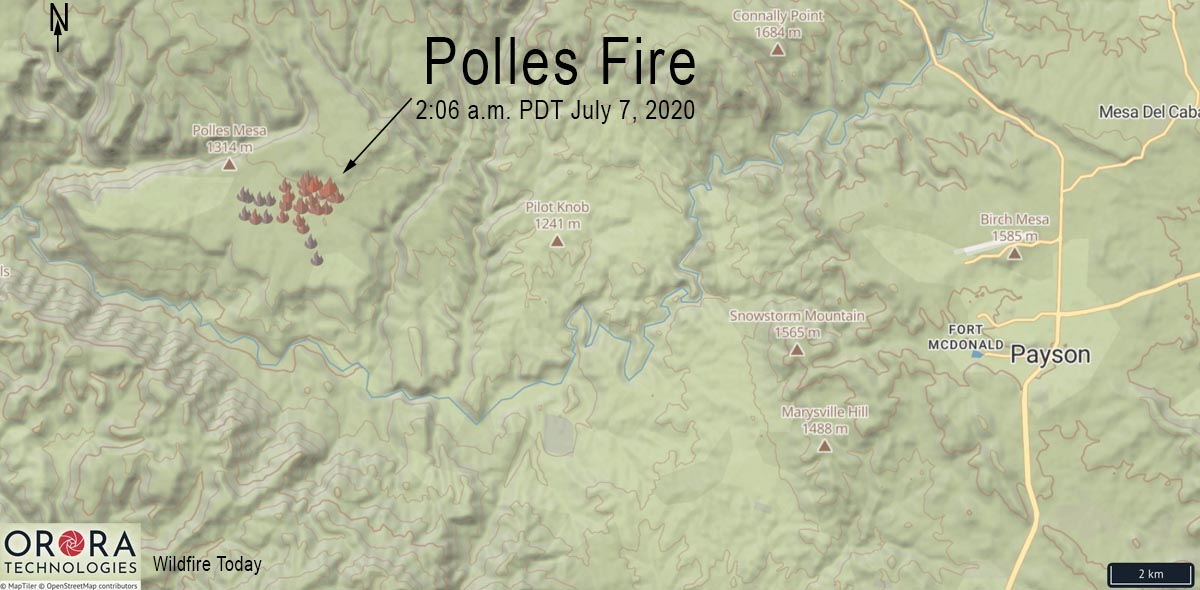
Officials from the Tonto National Forest confirmed that a helicopter crashed today while working on the Polles Fire in central Arizona. The only person on board was the pilot, who was deceased. He was identified in a press conference as Bryan Boatman, 37, with Airwest Helicopters out of Glendale, Arizona. He leaves behind a wife and 8-year-old child.
The Chief of the Pine-Strawberry Fire District said the pilot’s wife arrived at the Payson Airport as the body was being retrieved from the accident scene.
The helicopter crashed north of the main fire in a remote area only accessible on foot or by helicopter while transporting supplies for hand crews. After the crash was reported to the fire’s Incident Commander at 12:22 p.m. Tuesday, a Sergeant with Sheriff’s office was transported to the scene via short haul, suspended on a rope under a helicopter. He began the process of the investigation and removing the pilot’s remains.
A Federal Aviation Administration spokesman said the UH-1H helicopter went down about 10 miles west of Payson.
A Temporary Flight Restriction (TFR) has been issued at the Payson airport due to the crash, Airport Coordinator Dennis Dueker said. All flights in the area will be grounded until the TFR is lifted.
As of Monday night the Polles Fire had burned 580 acres 11 miles west of Payson, Arizona.
The Southwest Area Type 1 Incident Management Team (IMT) #2 led by John Pierson was scheduled to assume command of the fire July 6 at 6 a.m.
Six hotshot crews and three other hand crews are working in conditions described by the incident management team as extreme. They have been working shifts late into the evening for the last few nights, spiked out in remote locations relying on helicopters to fly in their food, drinking water, and supplies.
The IMT said there are no current threats from the fire to the communities of Pine-Strawberry or Payson.
The fire started July 3 from lightning. It is only accessible by helicopter.
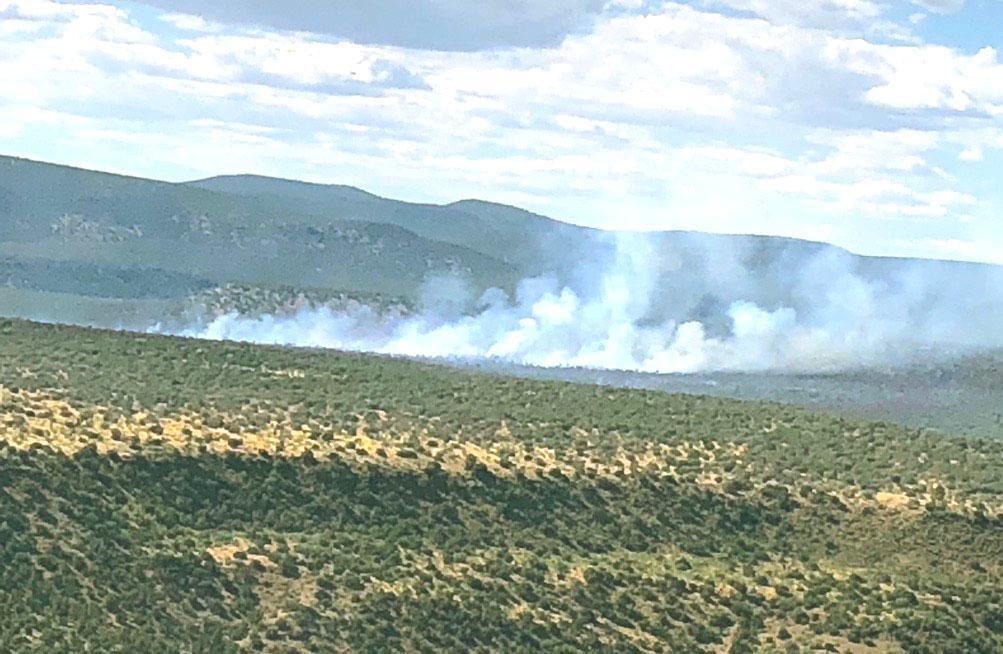
Our sincere condolences go out to the family and friends of the pilot, and the firefighters that were working on the Polles Fire.
Thanks and tips of the hat go out to Tom, Eric, and Kelly. Typos or errors, report them HERE.
Evacuations southeast of Minden, NV for Numbers Fire
17 miles south of Carson City
(UPDATED at 9:22 p.m. MDT July 7, 2020)

On Tuesday afternoon the Numbers fire six miles southeast of Minden, Nevada spread an additional two miles to the east, pushed by strong winds. Our very unofficial estimate based on satellite data is that by 4 p.m. Tuesday it had burned approximately 12,000 acres.
(Updated at 3 p.m. MDT July 7, 2020)

Residents directed to evacuate from the Numbers Fire are being directed to motels, rather than more conventional evacuation centers such as fairgrounds or sports facilities, due to the COVID-19 pandemic.
The fire has burned 7,500 acres 17 miles south of Carson City, Nevada and 6 miles southeast of Minden. The area is described as the Pine Nuts, in the Pine View area of Gardnerville.
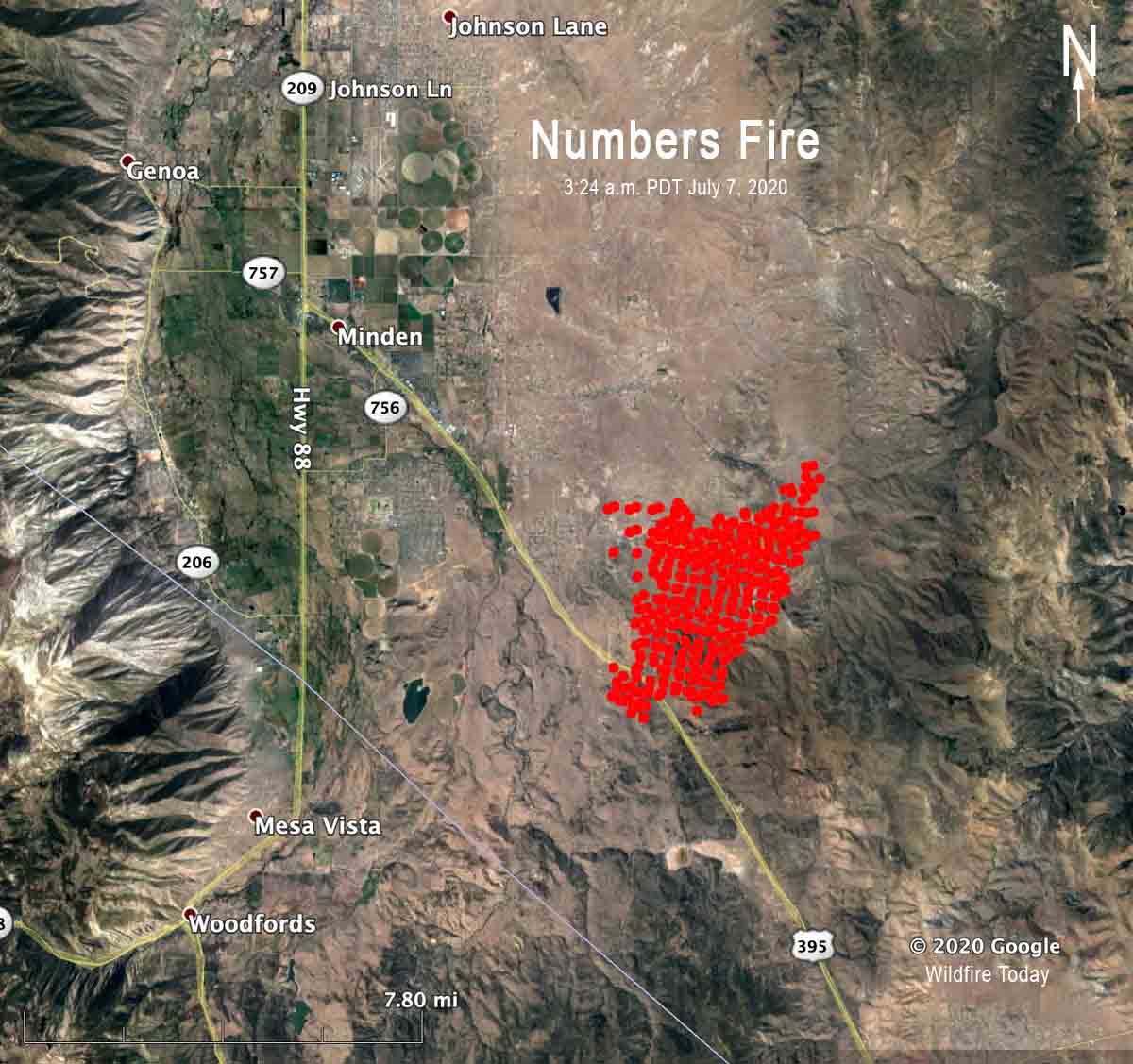
Fire officials said one “structure” has burned in addition to 10 outbuildings.
Tow ALERT Wildfire cameras have good views of the fire, Ridge Tahoe and Bald Mountain. The fire appears to be close to the latter camera.

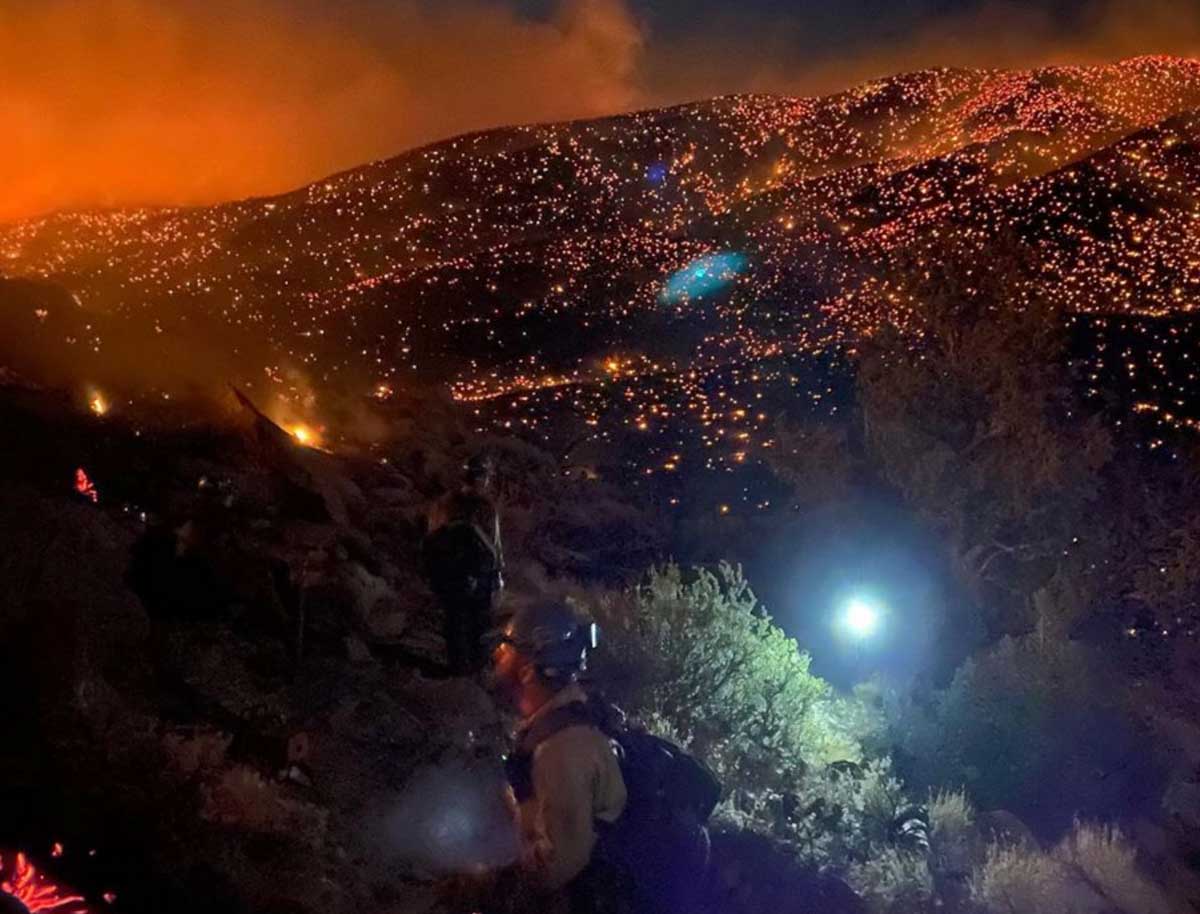
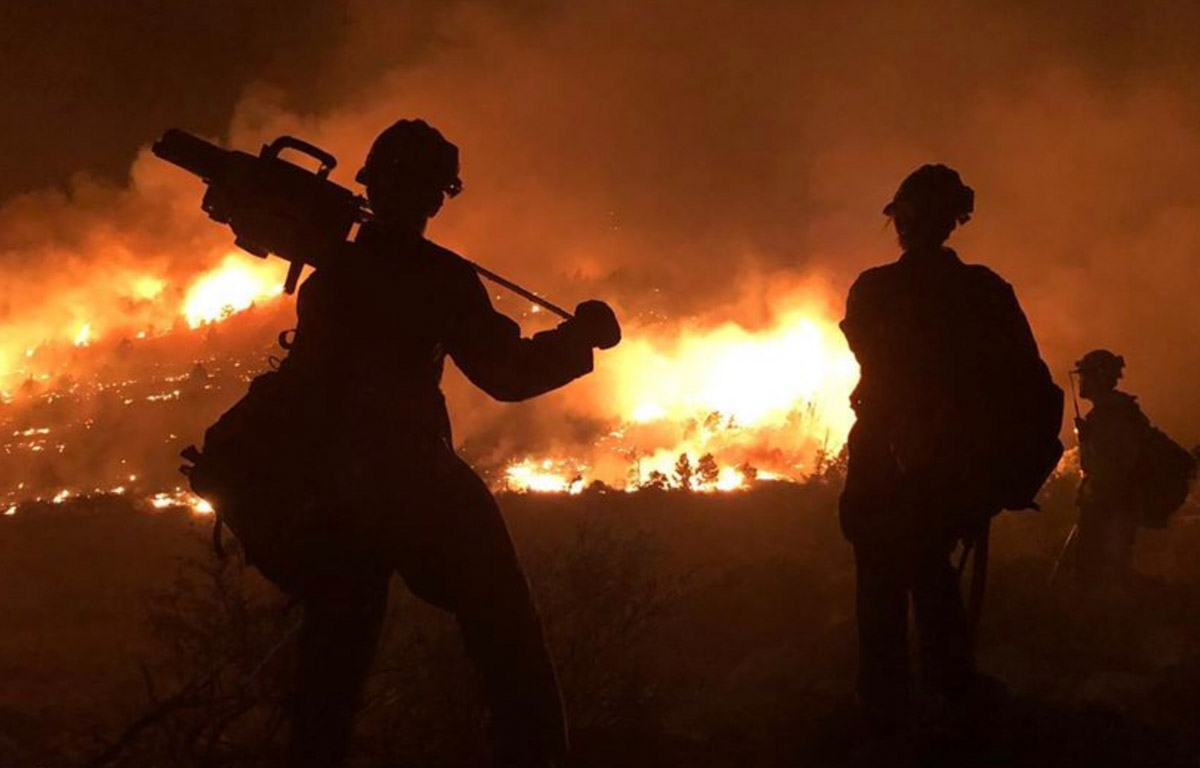
Thanks and a tip of the hat go out to Dan. Typos or errors, report them HERE.
Wildland firefighters’ invisible injuries can be life-threatening
A real-life example after the line of duty death of a fellow firefighter
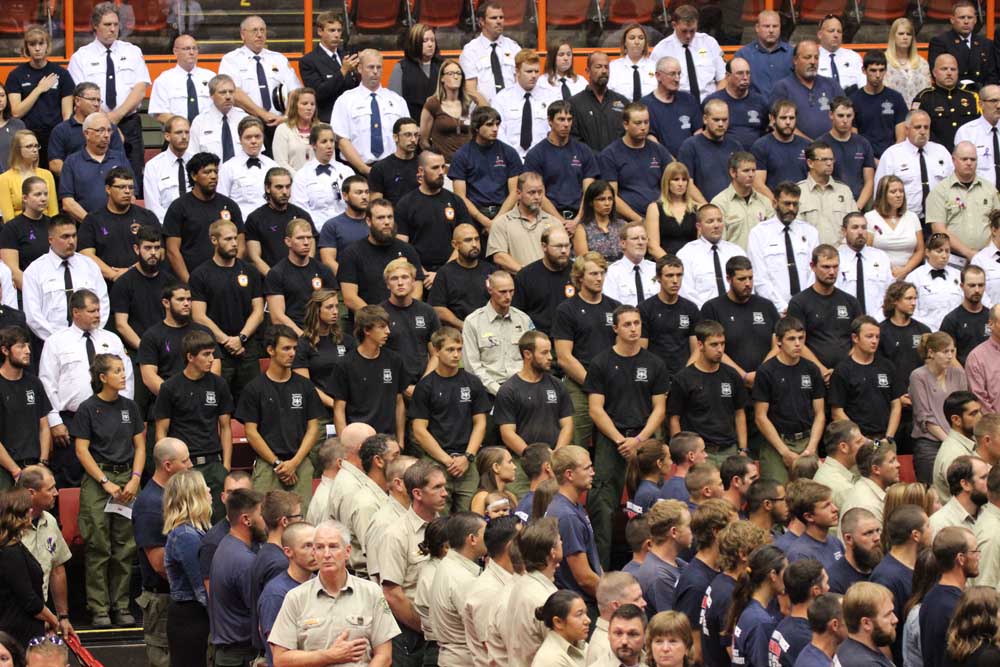
During his 14 years working for the Bureau of Land Management as a wildland firefighter, a fire that Danny Brown responded to on July 30, 2015 changed his life in ways that most of us cannot fathom. Mr. Brown was one of the first to find the burned body of his friend David Ruhl who was entrapped and killed during the initial attack of the Frog Fire in northern California.
An excellent article by Mark Betancourt in High Country News describes the upheaval that occurred in Mr. Brown’s life, how he tried to deal with it, and how the government’s system for treating on the job injuries failed.
Here is a brief excerpt:
The trauma Brown sustained that day could happen to any wildland firefighter. It drove him out of the career he loved and the community that came with it, and to his agony it limited his ability to support his wife and their three children. He was eventually diagnosed with chronic PTSD — post-traumatic stress disorder — and in his most desperate moments, he thought about taking his life. Adding to his suffering was the feeling that he had been abandoned by the government that put him in harm’s way.
A number of people bent over backwards trying to help Mr. Brown receive the professional help he badly needed, including a friend, a supervisor, the Wildland Firefighter Foundation, and Nelda St. Clair, a consultant who coordinates fire-specific crisis intervention and mental fitness for federal and state agencies.
Federal agencies that employe wildland firefighters (but call them technicians) hire them to perform a hazardous job. A percentage of them in the course of their career will be involved directly or indirectly with a very traumatic event. Many of them will power through it with no serious effects, at least outwardly. But others will suffer unseen injuries after having performed their duties.
These federal agencies do not have an effective system or procedure for helping their employees heal from chronic PTSD — post-traumatic stress disorder — incurred while on the job. Untreated, chronic PTSD can lead to suicide.
Ms. St Clair tries to keep track of how many wildland firefighters take their own lives each year. Her unofficial tally suggests as many die by suicide as in the line of duty.
I can’t help but think that if the job title of these “technicians” was instead, “firefighter”, it might be easier for the hierarchy to understand, and get them the professional support some of them so desperately need. Range Technicians have different job stresses than wildland firefighters. In some cases chronic PTSD is an issue of life and death, not something we can keep ignoring.
If you are a firefighter of part of his or her family, you need to read the article in High Country News. If family members recognize the symptoms it could be helpful.
If you are in an influential position in the federal land management agencies you need to read the article. Look at the firefighters in the photo above who were attending the memorial service for Mr. Ruhl. Do what you can to ensure that no other employees are forced to suffer like Mr. Brown and no doubt others, have.
If you are a federal Senator or Representative, you need to read the article. Then introduce and pass legislation so that other “technicians” do not have to suffer like Mr. Brown.
Help is available for those feeling really depressed or suicidal.
- National Suicide Prevention Lifeline: 800-273-8255. Online Chat.
- Anonymous assistance from the Wildland Firefighter Foundation: 208-336-2996.
- National Wildland Fire and Aviation Critical Incident Stress Management Website.
- Code Green Campaign, a first responder oriented mental health advocacy organization.
- Would you rather communicate with a counselor by text? If you are feeling really depressed or suicidal, a crisis counselor will TEXT with you. The Crisis Text Line runs a free service. Just text: 741-741

